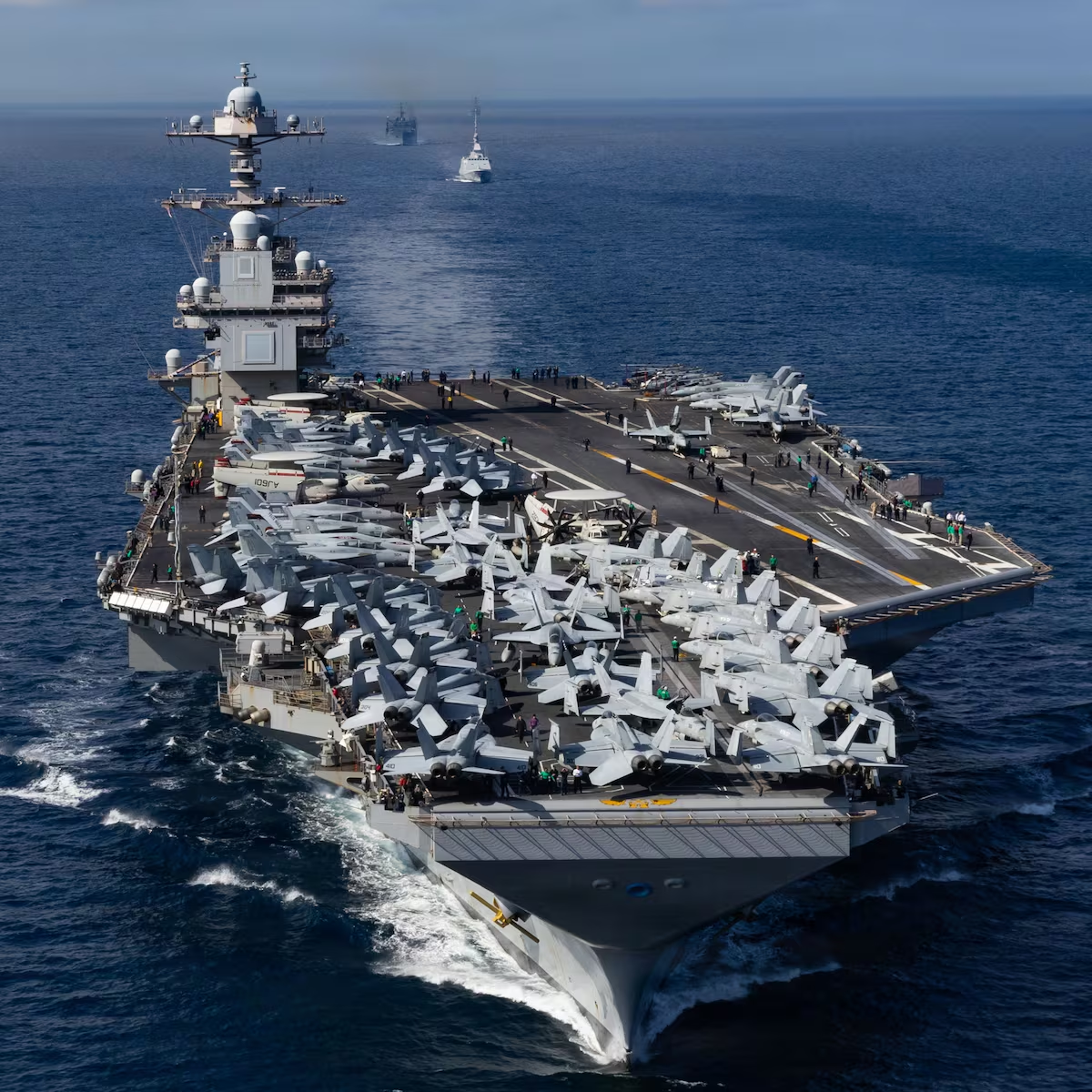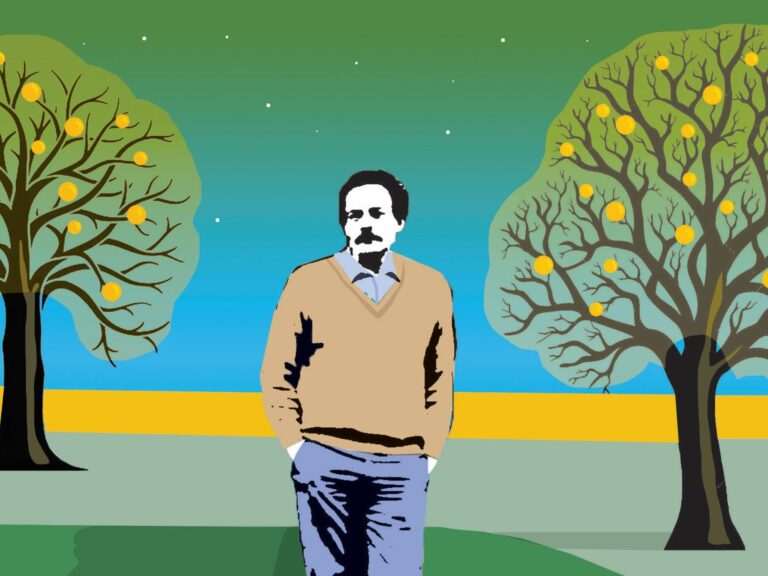
Pressure in the Caribbean is mounting amid growing signs that the United States could escalate military strikes against drug traffickers in the Caribbean and Eastern Pacific at any time. This Friday, the Southern Command released the first official photos of the world’s largest aircraft carrier. gerald fordis already operating in its territory a day after Secretary of Defense Pete Hegseth announced on social networks the start of a new major operation against “narco-terrorists” in the Western Hemisphere.
For now, details of its operation are very limited. In his messages on social networkssouthern spear), but did not provide details on what types of missions it would carry out. It is unclear whether the “Phase 2” that US President Donald Trump has talked about in his campaign to eradicate drug trafficking will be implemented. He noted that targets on the ground will also be included as part of pressure measures against Venezuela’s Chavez government, which President Nicolas Maduro has accused of being part of a drug cartel.
The Pentagon had already announced in January an operation of the same name that would deploy robots and drones to fight drug trafficking in the Americas.
📍Western Atlantic
in #southcom Carrier Strike Group 12 is stationed in the region with the objectives of disrupting illicit networks, thwarting transnational threats, protecting the Caribbean, and defending the homeland. @CVN78_GRFord pic.twitter.com/zG4IVQS2ln— U.S. Southern Command (@Southcom) November 14, 2025
The Pentagon did not want to provide further details, only referring to Hegseth’s messages on the network. In it, the Secretary of Defense declared, “President Trump has ordered us to act, and the Department of the Army (Hegseth’s preferred name for the Pentagon) is complying. Today, I am announcing Operation Southern Lance.”
“This mission, led by Joint Task Force Southern Lanza and Southern Command, will protect our homeland, drive narco-terrorists from our hemisphere, and protect our homeland from the drugs that are killing our people,” the U.S. military commander declared. “The Western Hemisphere is America’s neighborhood, and we will protect it.”
Mr. Hegseth’s cryptic remarks sparked frenzied speculation after his arrival that the United States might be preparing some kind of attack on targets inside Venezuela. of gerald ford. The aircraft carrier, the world’s most modern and the great jewel in the crown of the US fleet, was called up to the Caribbean on October 24, leaving the Central Command area of responsibility for the Mediterranean and the Middle East without an aircraft carrier in its waters, despite the delicate nature of the geopolitical situation in the region, where the ceasefire in Gaza remains fragile.
he gerald fordIt can carry up to 90 fighter jets, has 5,000 soldiers, and is accompanied by an escort group that includes three destroyers equipped with long-range missiles. These include Tomahawk projectiles, which Ukraine requested from President Trump because it believed it could hit targets deep inside Russian territory.
military option
Hegseth’s announcement came a day after he and Chief of Staff Dan Kaine led President Trump’s weekly briefing on Wednesday. That session outlined the military options the United States has to act in the Caribbean and Venezuela, although so far President Trump has not made a final decision.
The Trump administration has launched a military operation against Latin American cartels under the guise of combating drugs that invade U.S. territory and kill tens of thousands of people in the country each year. It has added some of them to the list of international terrorist organizations, putting them in the same category as the Islamic State and Yemen’s Houthi guerrillas. It claims its members are enemy combatants and considers it to be in a “direct, non-international armed conflict” with these organizations.
In August, Washington began a military deployment to the region. gerald fordhas already accumulated 20% of the world’s mobilized warships in international waters near Venezuela. The carrier and its escort group will now join a fleet that already had more than a dozen ships, including submarines, and F-35 aircraft. After their arrival, the number of U.S. troops operating in the area also increased to about 15,000. This is a buildup that hasn’t happened in Latin America for decades, and Washington is preparing for the most dangerous conflict yet.
Since September 2, the US military has carried out at least 20 attacks on suspected drug ships in international waters in the Caribbean and eastern Pacific Ocean, killing at least 80 people. The United Nations considers these attacks to be in violation of international law, a view joined by numerous experts, human rights groups including Amnesty International, and U.S. lawmakers. President Trump’s approval of bomber training flights near the Venezuelan coast and the CIA’s covert operations inside the country has added to the pressure.
The Pentagon also sent ground forces to Panama, which it invaded in 1989 to overthrow President Manuel Noriega’s government and where President Trump had threatened to intervene before taking office to regain control of the canal connecting the Pacific and Atlantic oceans. Both Washington and Panama denied that the mobilization was related to operations in the Caribbean.
The military deployment has strained relations between the United States and Colombia, as well as the country’s President Gustavo Petro, who Trump has denounced as a “thug” and “drug trafficker” and has imposed economic sanctions. Meanwhile, Colombia’s president described the attack on the boat as an “extrajudicial execution,” a term also used by the United Nations High Commissioner for Human Rights. This week, it announced a suspension of U.S. intelligence cooperation for that reason.
In Venezuela, where President Maduro believes the U.S. deployment is aimed at removing him from power, the president has called on people to prepare for a hypothetical “armed struggle” and ordered the creation of a defense force that includes citizens, officials and the military. It also announced that it would deploy 200,000 troops and “mobilize land, air, sea, river, and missile means” to counter a possible U.S. invasion.
Speaking from Canada, where the G7 foreign ministers met this week, US Secretary of State Marco Rubio made it clear that the country’s military operations are focused on combating drug trafficking. “That’s what (President Trump) has authorized and that’s what the military is doing. That’s why our military is there,” he argued. But he also noted that Washington does not recognize Maduro as Venezuela’s legitimate president and believes the Chávez government is openly collaborating with drug cartels.
Opposition leader Maria Colina Machado, who recently won the Nobel Peace Prize and has publicly defended US actions in the Caribbean, declared on Wednesday that the “defining moment” of a “historic moment” had come. Although he did not explicitly mention the country’s military operations in Venezuela or its possible intentions, he called for a “peaceful transition of power,” adding further fuel to the speculation.



